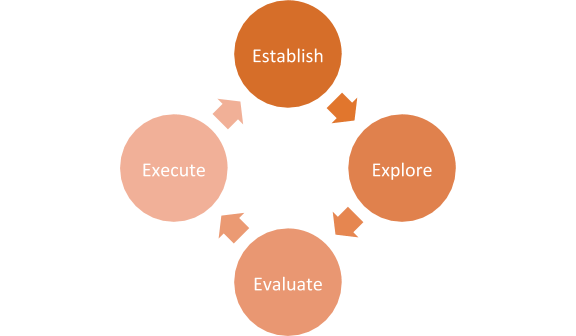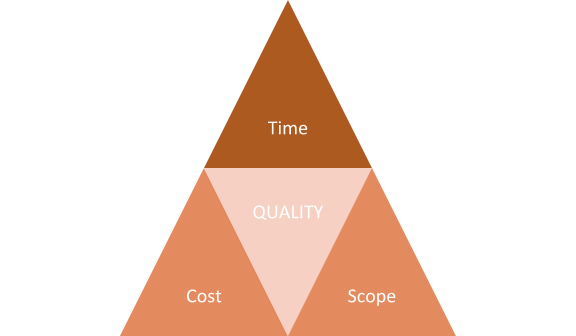Decision-making: The 4 Es Process
Daniel Anandaraj Garnipudi
Over the past few years, a lot of people have been asking me (yes, me, of all people) for advice. General advice on what to do with their careers, their education and, sometimes, even their motorcycles! A lot of these conversations are centred around how to make a decision.
I usually start off by telling them that these views are my own and based on pure common sense. Yes, my experience, my method of handling things, my (in)sanity has always helped in providing some sort of advice. And as a great man once said, “Advice is free, whether you take it or not is entirely up to you.”
Having said that, as Influx expands on its thought leadership strategy, where we maintain an active blog and encourage all our associates to write about what they are truly passionate about – be it work, perspective, or anything that piques their curiosity — we encourage each other to use practical common sense to bear in mind four major factors that govern any decision-making process.
Establish >> Explore >> Evaluate >> Execute >> Repeat!
Step 1: Establish #
Firstly, you have to pin down what exactly the problem is. What is it you are trying to solve? Does it require solving in the first place?
A common method I use is the 5W1H theory. It is a time-proven technique used a lot in BPI (Business Process Improvement) methodology. You ask yourself the questions: What? Why? When? Where? Who? How? I will not go into the details here; you will find a LOT of information on the web explaining everything you want to know about it.
Back again to common sense — you don’t need to read this blog to understand it – you need to define:
- what the problem is;
- why it came up;
- when it came up;
- where it came up;
- who was, or will be, responsible for sorting it out; and finally,
- how it will be sorted out.
Sometimes, there is no one common answer. You then take into play other factors to define what the actual problem is.
Now, assuming that you have defined all of the above and have a problem statement, what is the next logical step?
Step 2: Explore #
You have to look at multiple options and factors to see how you can solve a problem. For example, in management, you have to — more often than not — look at external factors such as cost, scope, quality, resources, time, etc. Be open to exploring possible solutions that will help you in solving the issue stated in your problem statement.
These options could be explored in a variety of ways that primarily involve research. Research can be on the web, reading up on material that is available out there, speaking to seasoned professionals, and many a time, just running it by a close family member or friend. Everyone is a genius at giving advice – remember that always! Sometimes the advice may not be what you want to hear, but it still is free!
Step 3: Evaluate #
Now that you have identified what the options are, you need to go back to the starting point. Establish! You will now have to evaluate all the options you have to decide which of the solutions you have explored is the best possible remedy for solving the problem at hand.
At this stage you are evaluating the identified solutions which take into account all factors that affect the success of the solution. Changing even one factor affects the entire cycle and you may have to go back to Step 1.
A very good example of this would be what is known in management terminology as the Scope Triangle or the Quality Triangle.
If you are too lazy to do that right now – read on!
In the project management triangle, there are three major aspects in a project or programme. These usually are:
- time to complete
- cost to complete
- scope of work
Any change in one of these factors usually impacts the others and, most importantly, the quality.
As you can see, it is not a step-through process as you have to always go back to the beginning, which is to Establish the problem itself.
Step 4: Execute #
Here is the hard part!
Now that you have Established the problem, Explored solutions, Evaluated them and arrived at a solution, the next stage is the Execution. All the issues and angst you may have faced before reaching this stage really mean nothing till you execute on it.
Planning your execution for successful delivery is a completely different ball game and perhaps one day – I will pen my thoughts on it.
I look at it like Nike says – Just do it!
You have already made up your mind now, don’t look back, go for it, and attempt to clear the problem that came up.
And finally – if you do execute your solution and still face an issue, go back up and start all over again from Establish!
I wish you well!
Daniel is our Chief Operating Officer and a true-blue biking aficionado. With a background of over sixteen years’ experience, he runs a tight ship here at Influx, ensuring that we deliver projects on time, in scope, and of exceptional quality. That’s why we have happy and satisfied clients.

